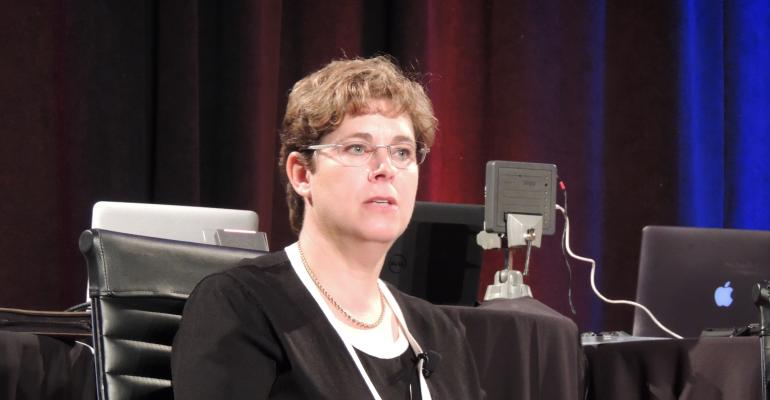LAS VEGAS – Nervous-by-nature investors may fret about the possibility of a growing subprime automotive-lending market going downhill in an avalanche of defaults. But panelists at a financial conference here aren’t worried. At least not about that.
Although sounding basically optimistic on the future prospects of the auto industry and auto lending in particular, the panelists do share a concern or two. The threat of subprime turning ugly isn’t one of them.
Yet some Wall Street types have voiced fears lately that slight increases in subprime auto-loan delinquency rates could mean bad things are to come.
That’s typical, says Amy Cutts, chief economist at credit-tracker Equifax.
“The investor class is nervous by nature, and it doesn’t take much to get them hyper-nervous,” she says at the American Financial Services Assn.’s annual Vehicle Finance Conference held in conjunction with the National Automobile Dealers Assn. convention.
“I can get out my magnifier and show delinquency rates going up slightly and a small basis-point charting,” she says, adding that’s more a reflection of increased automotive subprime lending in recent years than of anything else.
“If that’s the worry, there’s no problem,” she says after her participation on a panel discussing market trends.
Wall Street in recent years has shown an appetite for buying bonds in the form of bundled subprime loans to people with less than stellar credit. Santander last year readily did a $712 million subprime deal like that.
But there have been grumblings of late about the wisdom of such transactions, considering the upticks in delinquency rates.
Cutts’ concern isn’t that. Rather, it is the fear that skittish investors will take their money elsewhere, fleeing auto lending, or at least certain segments of it, and consequently tightening the availability of reasonably priced credit to people who want to buy cars.
“Investors might go somewhere else,” she says. “When I see a pullback in funding, I worry about credit availability (in auto lending).”
If auto-lending credit is curtailed, the auto industry undoubtedly would take a hit. Conference panelists note that when auto sales plummeted to 10.6 million in 2009 (compared to 17.4 million last year), the real culprit for the freefall was credit unavailability for would-be vehicle buyers.
“It’s easy to fund credit scores of 700 and up,” Cutts says. “You can do that all day long,”
Sixty-day delinquency rates went from 0.72% in 2014 to 0.77% in 2015, primarily because of subprime borrowers.
In electronic polling using hand-held devices at the conference, 93% of attendees say they think delinquency rates will go up this year.
Credit levels range from scores of 850 for super prime to 300 for deep subprrime. Experian says 2015 credit levels and their percentage of the automotive market are: super prime (27.68%), prime (43.15%), non-prime (17.69%), subprime (10.70%, up from 10.08%) and deep subprime (0.78%, up from 0.68%).
“We still think the automotive credit market is good even though some people are suggesting we might see a deterioration,” says conference panelist Matt Carroll, senior director-financial services for Standard & Poor’s. “Those people are making comparisons to the housing crisis.”
That’s when subprime lending indeed did blow up in 2008 and 2009. But the detonators were subprime mortgages that defaulted en masse, not subprime auto loans. The latter performed well during the recession, leading many investors to get involved in that credit segment, including subprime.
Today, any bad news on the subprime front rekindles investors’ memories of the horror show that was the subprime mortgage meltdown. To them, it was traumatic and not that long ago.
“Yes, we are seeing an increase in delinquencies and losses (from subprime auto loans), but those are coming off a low base,” Carroll says. “It’s more of a normalization.”
Delinquency and charge-off rates are relatively low, says Tom Murphy, a Wells Fargo executive vice president.
In 2009 “a lot of private equity moved from mortgages to auto (lending),” he says, wondering whether such investors will stay.
He adds, “I’m generally the most optimistic guy around, and we are looking for deals, but I have some concerns.” One of them: “Yeah, people are getting jobs, but are they jobs that can pay for a 72-month car loan?”
Slow wage growth is an issue that can affect auto sales, says Mike Wall, director-automotive analysis for IHS Automotive. “It’s something we’re looking at closely. There are some troubling aspects to it. It’s a limiting factor.”





